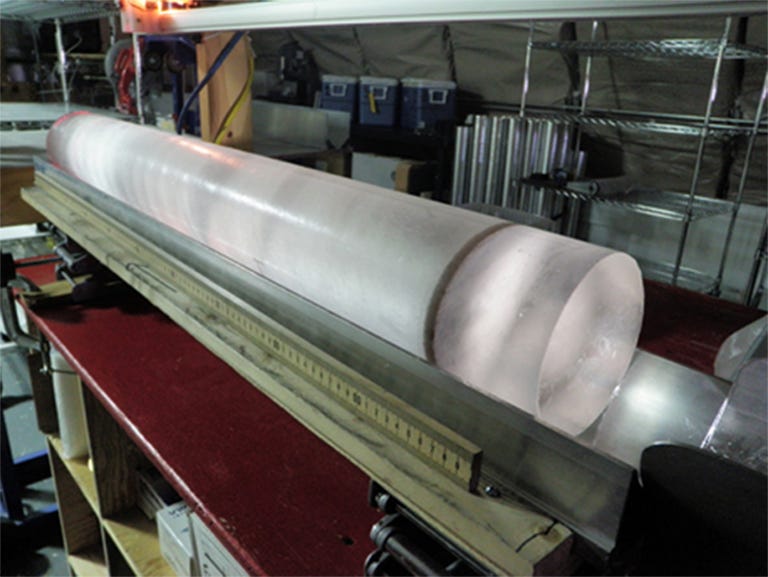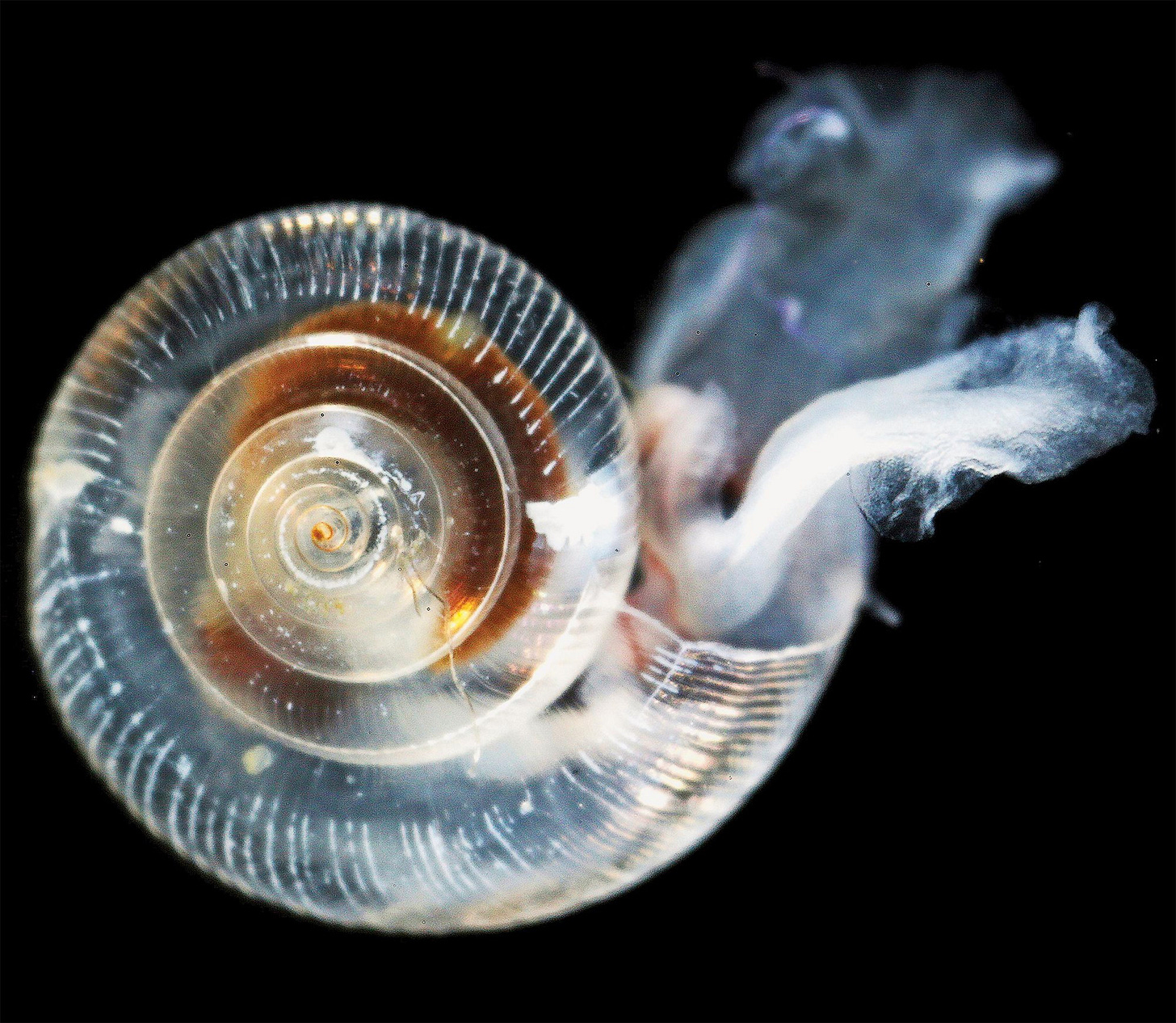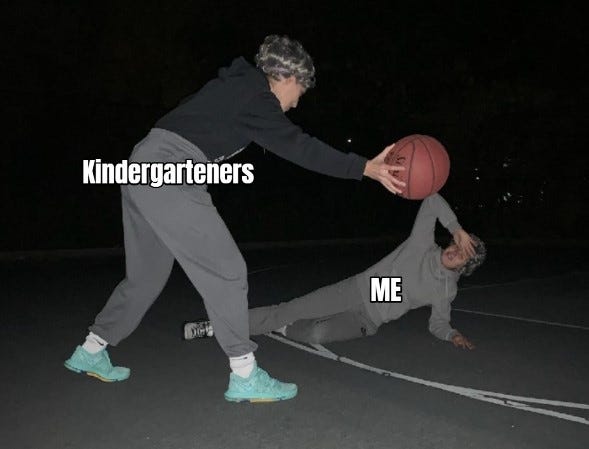Back To the Basics: Climate Change 101
What actually is climate change? And how do we know it's happening?
Hello everyone,
I’ve recently been substitute teaching at the nearby public schools. Let’s just say this: Miss Maddy tried her best. I’ve come to the conclusion that all teachers are saints and should be paid more for what they do. Topic for a different time.
Anyway, I’m telling you this because during my time teaching, I’ve realized that there’s a serious lack of climate education in our schools. And this is a huge reason why we have a lack of knowledge in society today. I learned the quadratic formula in school, which I have never used, but never learned about climate change. How does that make any sense?
The power to invoke change starts with being able to talk about the issue, and if we’ve never learned about it, we can’t. I thought it would be best for us to build a strong foundation before we go any further, so all of us are confident when we talk about climate change, and can back it up with evidence. I hope you are able to do that after today.
So now I’m going to put my teacher hat on. Welcome to Climate Change 101! No plastic straws allowed in class…
TOPIC #1: Climate terminology
In order to fully understand climate change, we have to get familiar with the terminology used.
The atmosphere above us serves as a greenhouse by trapping the sun’s heat, which keeps our planet warm. This is called the greenhouse effect. We should be grateful for the atmosphere, because not only does it serve as a blanket to keep us warm, it provides oxygen, and protects us from UV rays. Without it, life on Earth would not exist (Source: USBC.edu). On the planet Mars, where the atmosphere is so thin, there is not enough of a greenhouse effect, and its surface is mostly frozen with no evidence of life (Source: NASA).
Then you have Earth, which has been sustaining life for billions of years. But what’s been happening, is that humans have disrupted the greenhouse effect with how we power our world. Since the Industrial Revolution, about 200 years ago, we have been burning fossil fuels, like oil, coal, or natural gas. Fossil fuels get their name because they come from prehistoric decomposed plants and animals that are buried deep under Earth’s surface (Source: NatGeo).
Confused about the greenhouse effect? Watch this short video
When fossil fuels are burned, they release greenhouse gases, like Carbon Dioxide, also called CO2, which are gases that trap heat in our atmosphere, making the blanket around Earth much thicker. We continue to burn fossil fuels more and more every year, which increases the concentration of CO2 in our atmosphere (Source: NASA). This increase of CO2 has led to global warming which is the long-term warming of the planet’s average surface temperature. When scientists first discovered greenhouse gases and their heat trapping capabilities, global warming and polar bears were the poster children of the issue. Now, scientists understand that greenhouse gases do much more to the planet than just global warming (Source: NatGeo).
These changes to the planet include rising sea levels, melting glaciers, a warming ocean, a more acidic ocean, and increases in extreme weather events (Source: NASA). This is what we call global climate change. The term encompasses all of the different ways regions across the globe are changing. This doesn’t mean we changed ‘global warming’ to ‘global climate change’. Global warming is still very prevalent. Global climate change is the umbrella term, and global warming falls underneath it.
It’s also so important to understand the difference between weather and climate. They actually are not the same thing. Weather deals with short term events. For example, a rainy day. Climate is the average weather pattern in a region, averaged over seasons, years or decades (Source: NASA). For example, we can expect snow in New England in December because of this region’s climate. A good rule of thumb is this: “Climate is what you expect, weather is what you get” (Source: NOAA).
We should know this difference because we cannot point to a snowy day and say “climate change isn’t happening,” just like we cannot point to a hot day and say “this is climate change.” We must look at the climate of that region over time and look at the changes that have taken place.
Side note: Yes, average global temperatures are increasing, but some regions may experience record cold temperatures and snow storms because of global climate change. Studies have predicted that the Northeast U.S. could be one of them (Source: NatGeo). Studies have shown this could be a result of a changing climate in the Arctic, which has resulted in cold air escaping towards North America (Source: Stefan Rahmstorf).
TOPIC #2: Temperature rise
Earth has been warming more rapidly than any time in its history. How do we know this? There’s a field of science called paleoclimatology, which studies Earth’s past climates from ancient times, way before there was technology to do so. Scientists can see what the climate was like on Earth millions of years ago. They look at tree rings, coral reefs, ocean sediments, or layers of ice in glaciers (Source: NOAA).
“Bubbles of air in glacial ice trap tiny samples of Earth’s atmosphere, giving scientists a history of greenhouse gases that stretches back more than 800,000 years. The chemical make-up of the ice provides clues to the average global temperature.” -NASA.
Pretty awesome stuff:


What scientists have found is that Earth has gone through drastic climatic changes, such as ice ages and periods that are even warmer than today. But these changes happened over very long periods, sometimes thousands of years. What’s so alarming for scientists now, is that Earth’s temperature is rising faster than ever in its history, even when Earth was recovering from an ice age. They’ve found that in the past century, Earth’s temperature has risen 10 times faster than the average rate of warming during Earth’s ice age recovery. And during the next century, Earth is predicted to warm 20 times faster than the global warming which happened at various times in the past two million years (Source: NASA). When temperatures rise so quickly, life on Earth, including us, simply cannot adapt to the changes.
When talking about Earth’s temperature, 1°C, 1.5°C and 2°C are three very important temperatures to understand in today’s dialogue. 1°C is how much warming human activities have already caused above pre-industrial levels (Source: IPCC). 1.5°C is where we want to limit the warming. A 1.5°C world is much more livable and safe than a 2°C world, and we must do everything we can to limit warming below 1.5°C.
2°C or higher is where we don’t want to be. This warming would set off irreversible damages to our climate system and have catastrophic consequences. At 2°C, coral reefs are projected to decline by 99% (Source: IPCC). More than 500 million people worldwide rely on coral reefs for “food, income, and coastal protection” (Source: NOAA). Corals also support over 25% of all marine life (Source: NOAA). At 2°C, deadly heatwaves in India and Pakistan, like the one in 2015 which resulted in more than 3,600 deaths, may occur every year (Source: NASA). The Paris Agreement, which is an international climate treaty signed by nearly every country (minus the United States right now), is aimed to limit warming to 2°C, while also striving towards 1.5°C (Source: NRDC).
In conclusion, 1°C is where we are, 1.5°C is where we want to limit it, and 2°C or higher is where we don’t want to be.
TOPIC #3: Oceans
Oceans are warming. As we discussed, when we put more greenhouse gases into the atmosphere, more heat is trapped because of the greenhouse effect. Earth has to compensate for this excess heat, and the ocean is where the majority of this heat is stored. Estimates say that more than 90% of this trapped heat is absorbed by the oceans (Source: NASA). This has had serious impacts on marine life. For example, coral reefs are a species highly sensitive to slight temperature changes; 98% of coral reefs are already gone in Florida (Source: Guardian).
Warming oceans have also disrupted the migration of many marine species, their reproduction, and their food sources (Source: PHYS.org). Warming oceans are killing off krill, which are whales main source of food. This forces whales to migrate longer distances in search of food. Marine biologist Cristina Castro describes the impact this is having on hump-back whales: “You can see their bones. They're sick. They have parasites. We never used to see that.” With less food, birth rates and survival rates for calves also drop.
Ocean levels are rising. When water warms, it expands, so as the ocean warms, ocean levels rise as a result. This is where we get the term sea level rise. Another major reason sea levels are rising is because of the added water from melting ice sheets in Antarctica and Greenland. This double punch is why sea level is rising at a rate never seen before (Source: NASA). Over the past 100 years, the global average sea level has increased about 7 inches, and is predicted to rise for centuries (Source: NASA). If you consider just how massive the ocean is, about 70% of Earth’s surface, holding 97% of Earth’s water, that statistic is quite frightening (Source: NASA).
40% of the U.S. lives near the coast, which presents an incredible threat to not only our economy, but to our communities that reside there (Source: NOAA). Many U.S. coastal cities are currently at risk to be underwater by the year 2100 (Source: BI). Environmental author Jeff Goodell describes the threat Miami, Florida currently faces: “Miami as we know it today — there's virtually no scenario under which you can imagine it existing at the end of the century” (Source: BI). One report predicts that about 1 in 6 homes in Boston, Massachusetts could be underwater by 2100 (Source: BI).
Oceans are becoming more acidic. About 30% of CO2 released into the atmosphere is absorbed by the ocean (Source: NOAA). In a more acidic ocean, many organisms such as oysters, clams, and corals cannot build and maintain their shells. Acidic waters can actually severely dissolve shells, which was the case in 53% of sea butterflies (see photo below) in a West Coast study (Source: NBC). In addition, the ability of certain fish to detect predators is decreased in a more acidic ocean (Source: NOAA). All of these consequences put the entire marine food web at risk.

TOPIC #4: Natural Disasters
My generation has grown up in a world where climate disasters have always been the norm; we’ve become numb to them. Hurricane Katrina happened when I was 7, and every year since, disasters have been striking harder and with increasing regularity.
Society at large has become numb as well. Disasters have become so regular on the news that it’s no shock when there’s another category 5 hurricane, which is currently happening right now with Hurricane Iota.
It’s impossible to deny the evidence of increasing natural disasters. The following statistics are the billion-dollar disaster events in the United States that have occurred in the last 40 years, broken up between decades. (Note: the cost is CPI adjusted i.e. adjusted for inflation)
1980s (1980-1989): 7 Severe Storms, 0 wildfires, 6 Tropical Cyclones, 4 Floods, 5 Droughts
Total billion dollar disasters: 29
Total of all costs: $178.1 billion
Total deaths: 2,870
1990s (1990-1999): 14 Severe Storms, 3 Wildfires, 12 Tropical Cyclones, 8 Floods, 6 Droughts
Total billion dollar disasters: 53
Total of all costs: $273.8 billion
Total deaths: 3,045
2000s (2000-2009): 26 Severe Storms, 7 Wildfires, 15 Tropical Cyclones, 3 Floods, 8 Droughts
Total billion dollar disasters: 62
Total of all costs: $518.1 billion
Total deaths: 3,091
2010s (2010-2019): 68 Severe Storms, 7 Wildfires, 12 Tropical Cyclones, 18 Floods, 8 Droughts
Total billion dollar disasters: 119
Total of all costs: $810.3 billion
Total deaths: 5,217 deaths
Source: NOAA
It doesn’t take a math major to see we are now experiencing natural disasters at an increasing rate, with serious costs. This past decade, severe billion dollar storms are 9x more frequent than in the 80s. Costs over 4 times higher. Floods, 4x more frequent. Tropical cyclones and death tolls nearly doubled. We experienced ZERO billion dollar wildfire events in the entire decade of the 80s. Let that sink in.
Whether from an economic, environmental, or care-for-human-lives standpoint, this is alarming. And is something that cannot be ignored, because natural disasters will continue to devastate our country at record breaking levels each year, if we don’t cut emissions fast.

Climate change is a very involved and complex topic that we could spend days talking about. But I hope you leave this newsletter with a better understanding of some of the basics, and can take that knowledge with you. Please feel free to reach out to me with any questions or comments. Here are some additional resources I find very helpful:
Frequently Asked Questions on Global Warming Backed by Science
How the World Would look in 2050 if We Solved Climate Change
Stay healthy and stay safe. Remember, as Nelson Mandela once said, “Education is the most powerful tool we can use to shape the world.”
Miss Maddy, Out!
p.s. please enjoy this photo of my dear old college friend Julia and I during Halloween a year ago.




